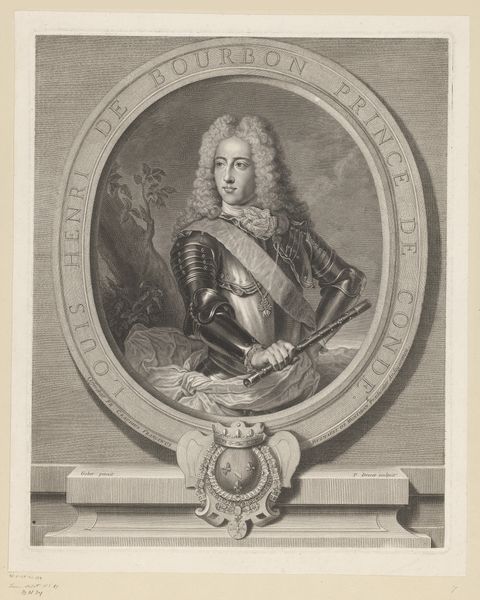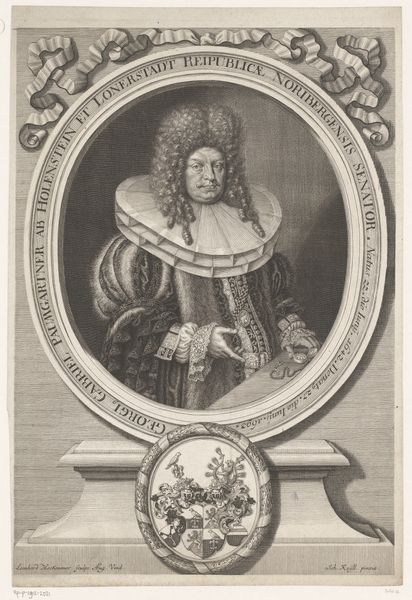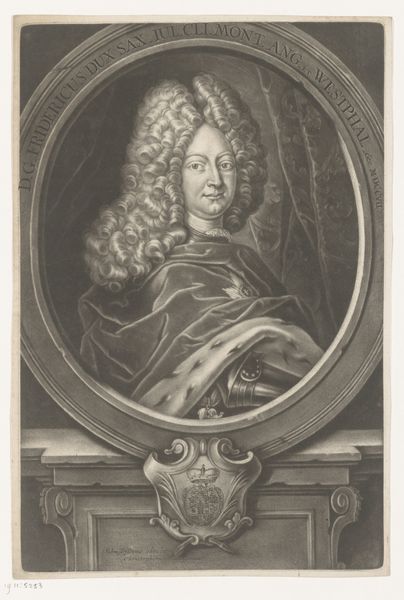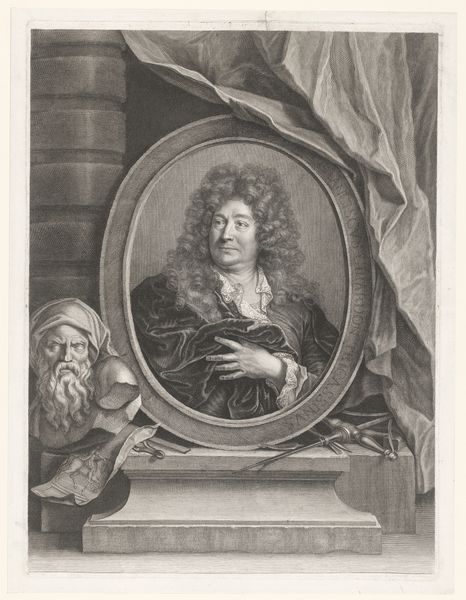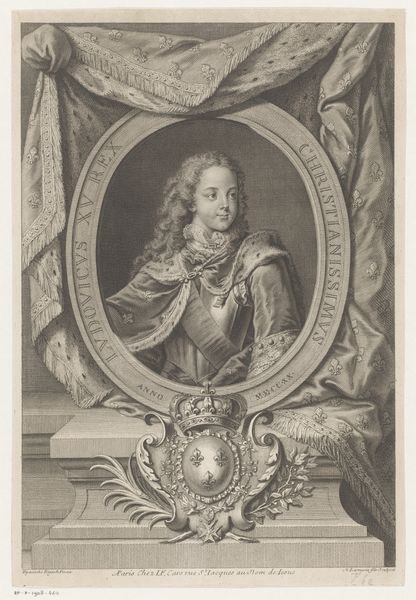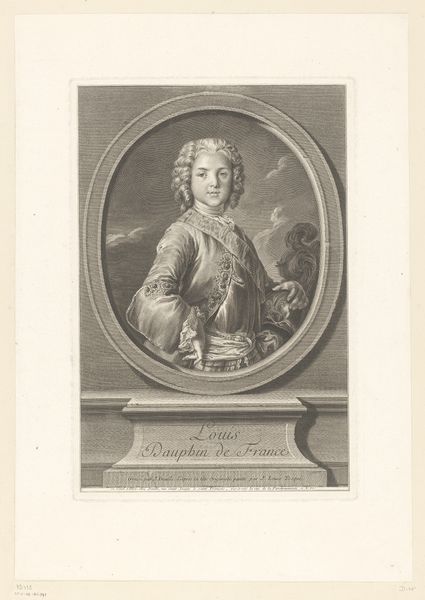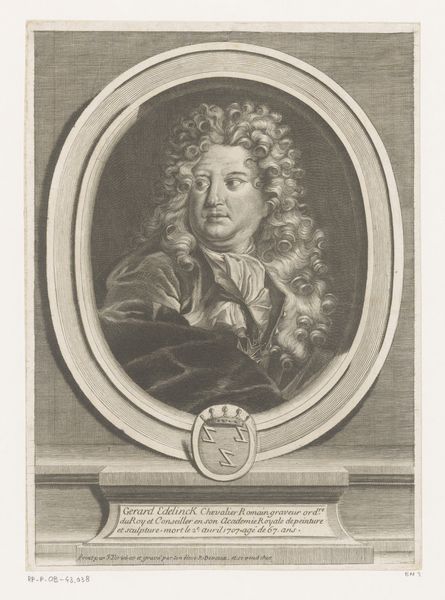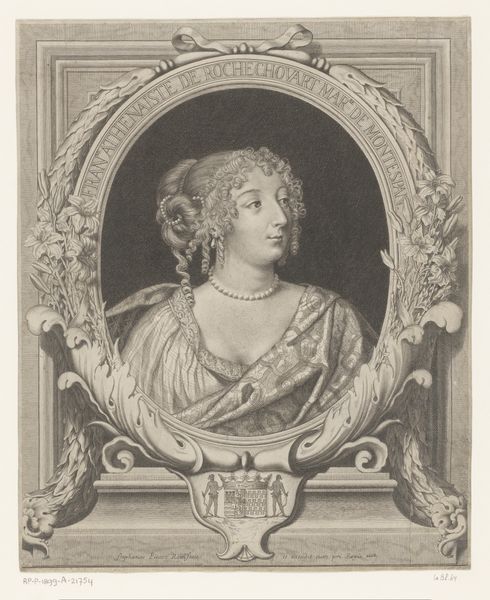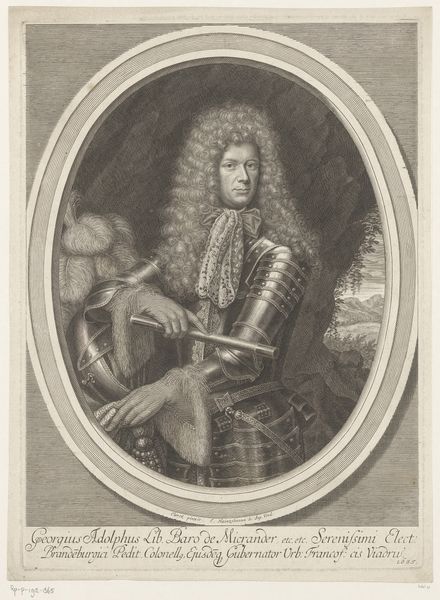
print, engraving
#
portrait
#
baroque
# print
#
history-painting
#
engraving
Dimensions: height 467 mm, width 382 mm
Copyright: Rijks Museum: Open Domain
Editor: So, this is Pierre Drevet's 1714 engraving, "Portret van Lodewijk Alexander van Bourbon." The figure’s lavish wig and armor definitely scream Baroque opulence! What do you see in this piece? Curator: It's an interesting visual document. Here we have a portrait that on its surface celebrates power. But let's unpack that. It’s not simply a representation of Louis Alexander; it’s a constructed image deeply intertwined with the politics of representation. How does the armor and pose play into constructing his image, do you think? Editor: It's definitely projecting power and authority, right? The armor signifies military might, while his direct gaze and gesture command attention, but is there a critique beneath the surface? Curator: Precisely! The elaborate wig and clothing can be read as signifiers of privilege. But when we situate this portrait within the broader context of 18th-century French society, questions emerge: who has access to these images and what are they meant to convey? What is excluded or erased through this representation of elite power? Editor: That’s such a great point, the very act of printing this for distribution serves a function in its time. I guess I had been taking that for granted! So, the portrait becomes a tool to legitimize power, while simultaneously highlighting the inequalities inherent in that system? Curator: Exactly. By critically examining visual cues such as the gaze, dress, and pose and their historical, cultural context we begin to question who controls the narrative and whose voices are amplified or silenced in the grand theatre of representation. Editor: It definitely makes you wonder about who *isn't* in the portrait, doesn't it? Thank you, that gave me so much to think about. Curator: Agreed. Thinking critically about these images is critical in understanding visual rhetoric, gender and race dynamics and the manipulation of power in past and current societies.
Comments
No comments
Be the first to comment and join the conversation on the ultimate creative platform.

